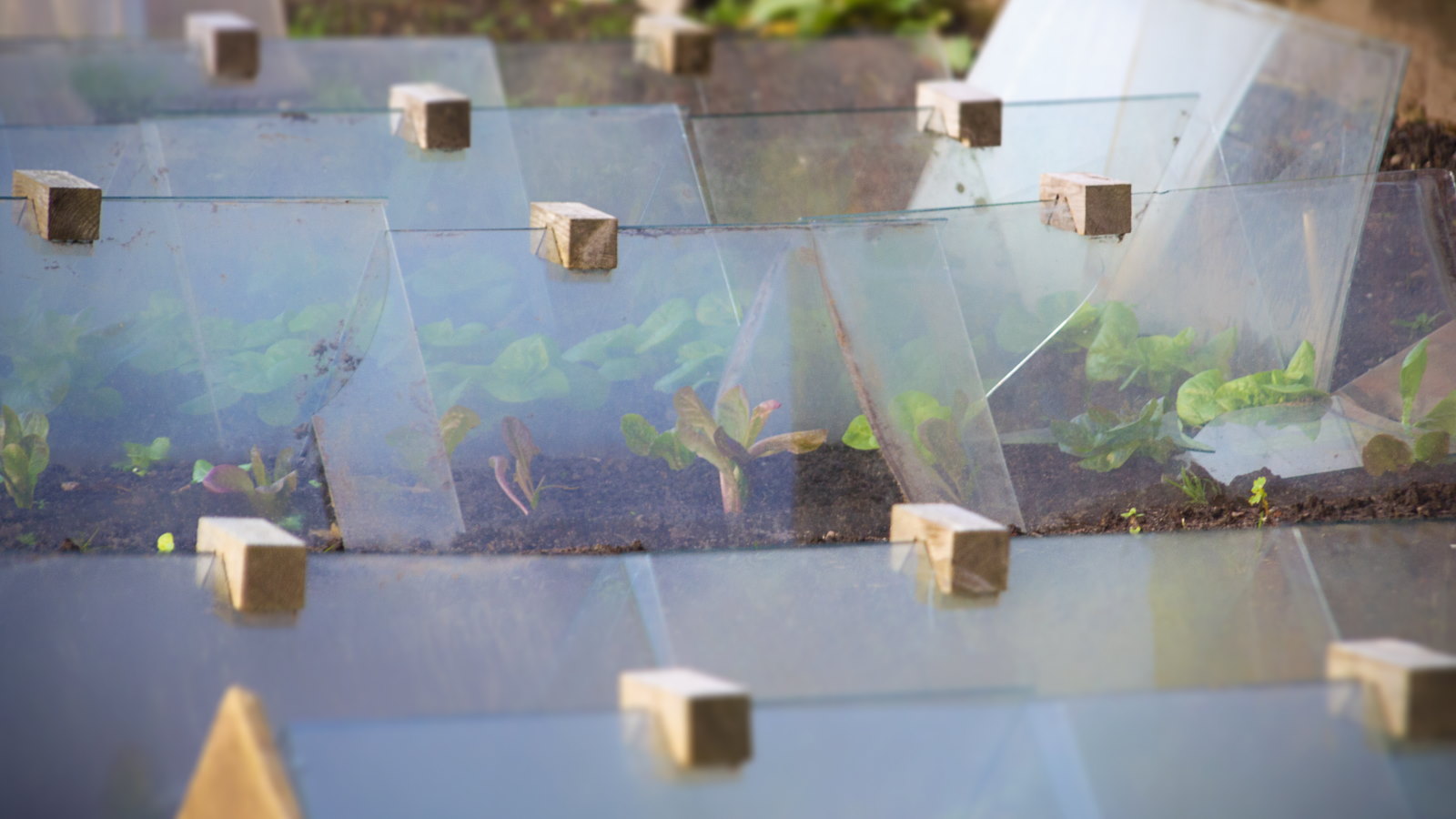
Garden cloches are super useful for protecting plants. Whether against frosts or pests, cloches keep your plants tucked up and secured. They give you peace of mind knowing that plants will be covered and protected whatever the weather throws up.
Mention garden cloches to people and they may picture the traditional large, ornate glass covers. Cloches nowadays come in different shapes and sizes and there are plastic and glass versions to choose between, depending on your budget.
However, many households now choose to garden sustainably where they can and reuse items. The good news is that there are opportunities to make a DIY cloche for plants that will perform just as well. Using household items and common garden materials, you can make homemade cloches to protect plants from frost.
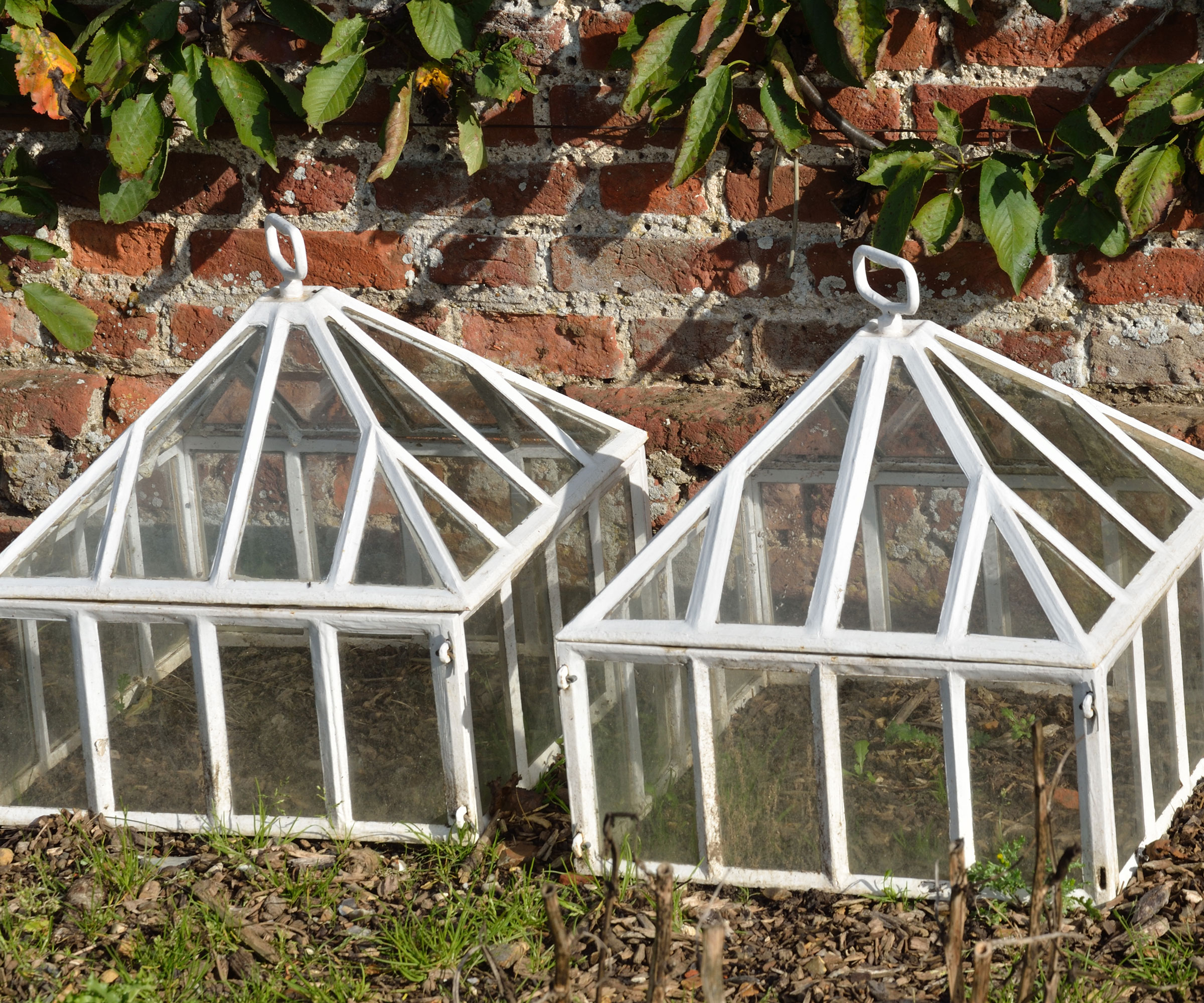
5 cloche alternatives to protect your plants
If you are looking for makeshift alternatives to help overwinter a garden, the following cloche alternatives may be worth considering. I gathered suggestions from experienced gardening professionals to showcase five alternative and DIY cloche ideas. They can all be put together quickly and simply and will not cost an arm and a leg.
1. Plastic bottles
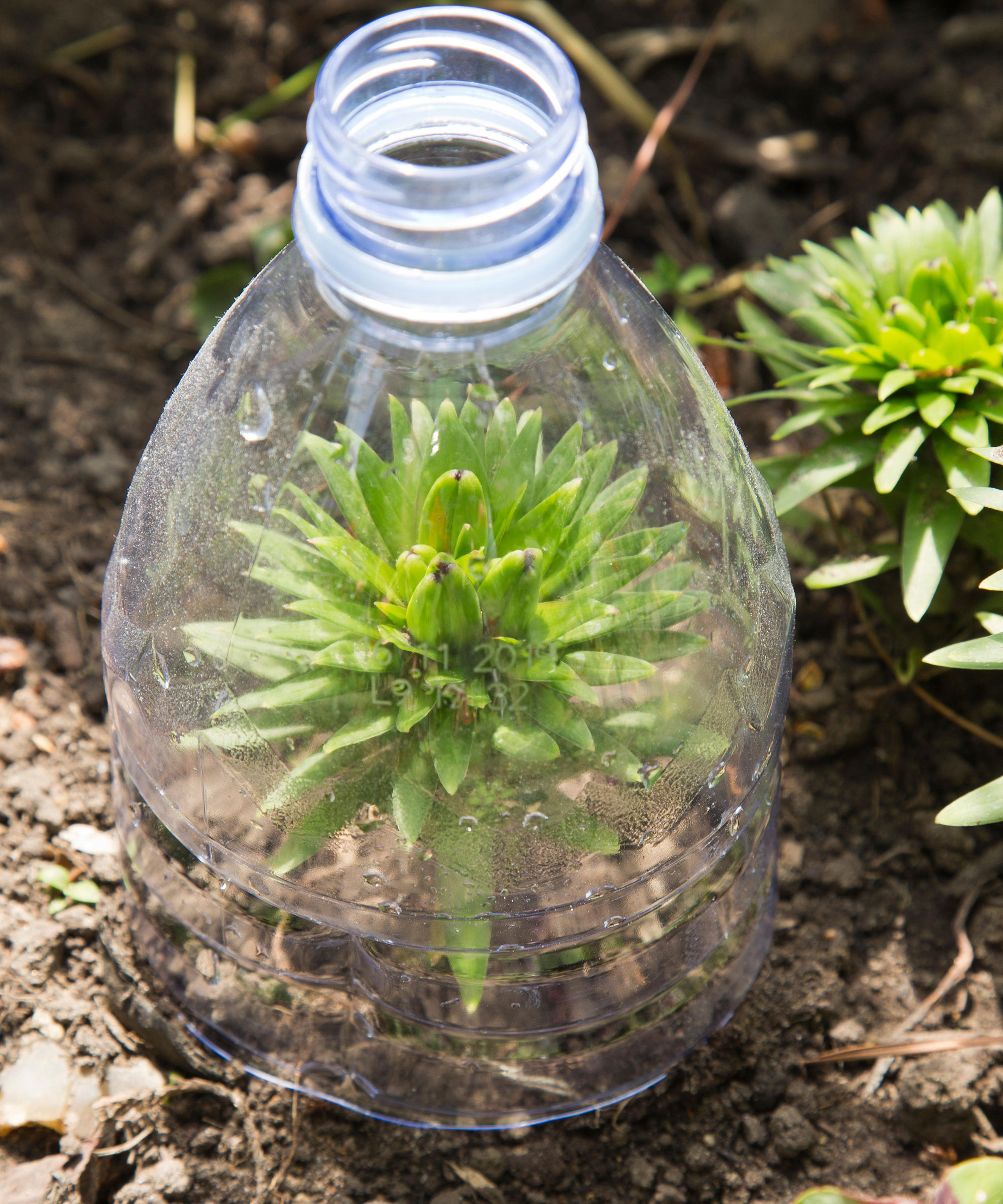
Recycled plastic bottles can make a great alternative to traditional cloches and offer a fantastic way to reuse this common household staple. Plastic bottle cloches are very simple to make and use and they offer several benefits, including extending the growing season and protecting plants from frost and pests.
Andrew Porwol, a seasoned landscape expert and founder of Sapcote Garden Centre, recommends large plastic soda or milk jugs as fantastic materials to recycle into a temporary DIY cloche.
‘Cut off the bottom of the bottle and set it over the plant, leaving the lid open for air,’ he says. ‘The translucent material retains heat while allowing light through, resulting in a tiny greenhouse effect.’
Rachel Bull, Head of Gardens at H&G, has used recycled plastic bottles in this way and hails their ability to protect young plants in a small vegetable garden. She says: ‘When we had an allotment I cut large lemonade bottles in half and I used these to cover really tiny carrot and beet seedlings - it definitely worked to protect them from being eaten.’
Providing adequate ventilation and ensuring it is well-anchored are both very important when using plastic bottles. While plastic bottles can make successful DIY cloches, they should only be used as a short-term solution.
2. Glass panes
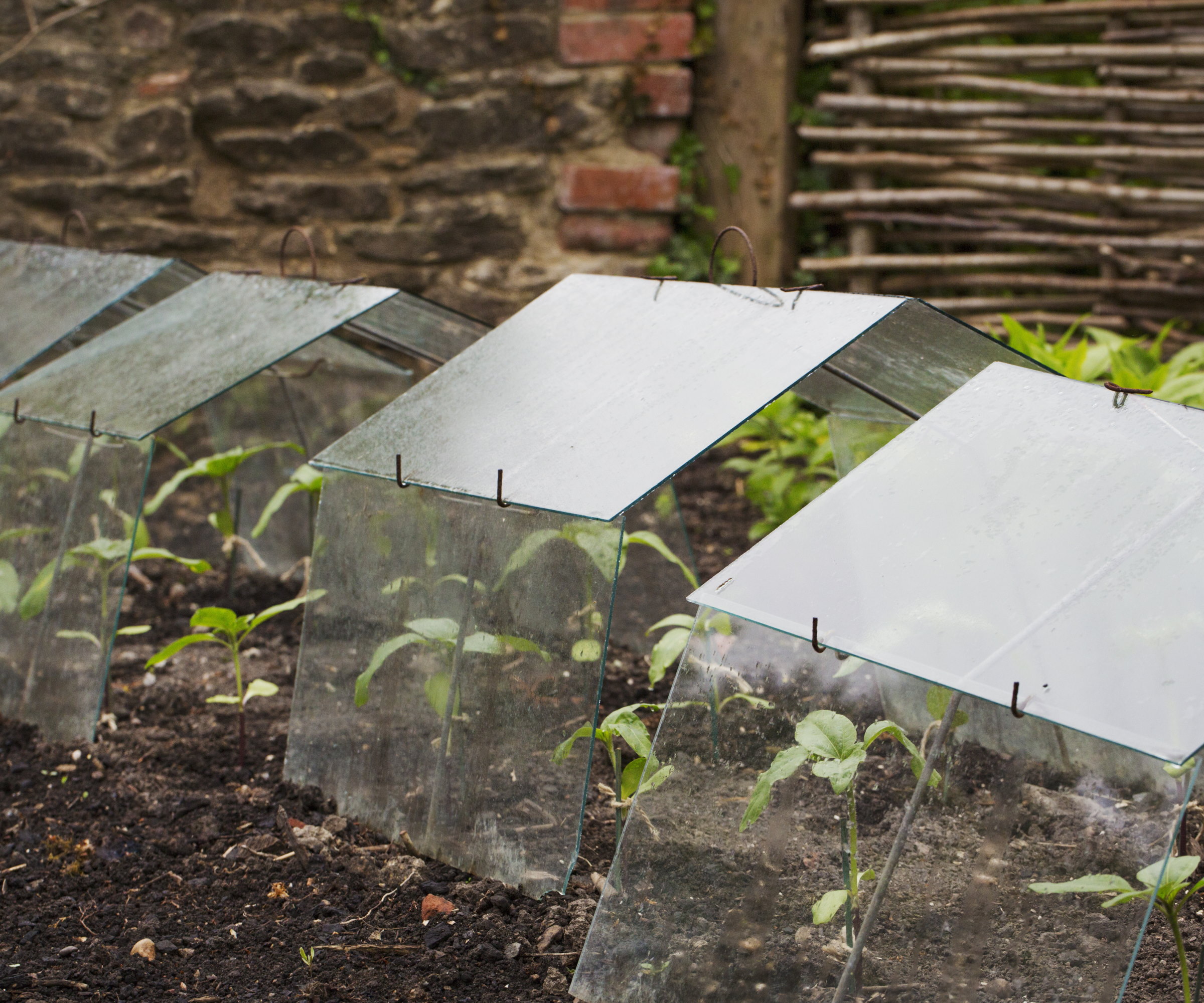
Before we get to using glass panes, it should be noted that large glass jars can be used to protect small plants as a DIY cloche. They will provide insulation to plants, but can cause overheating on bright days so need to be removed for ventilation.
If you want something larger than a jar, then look no further than an old pane of glass. Any old glass leftover from housing renovations, or removing an old shed or greenhouse, can be used to build a larger cloche around plants - think of it like a DIY cold frame. This solid structure can protect plants from cold weather and remain in place throughout the winter months.
Thom Rutter, former professional gardener and content editor at H&G, says old panes of glass make a ‘simple but effective’ DIY cloche and recalls using them as a cloche alternative.
‘In its most simple form, use two panes of square or rectangular glass to create a tent-like shape, leaning inwards against one another,’ advises Thom. ‘I have previously done this when working as a gardener in London, using insulation tubing, available from Amazon, along the top of the glass to prevent the glass panes from rubbing against each other, which could cause them to shatter in strong winds.
‘Be sure to also cover the ends of your cloche, either with glass or transparent plastic sheeting. While not the prettiest creation, this will certainly do what you need and keep your plants warm on those frosty days.’
3. DIY domes
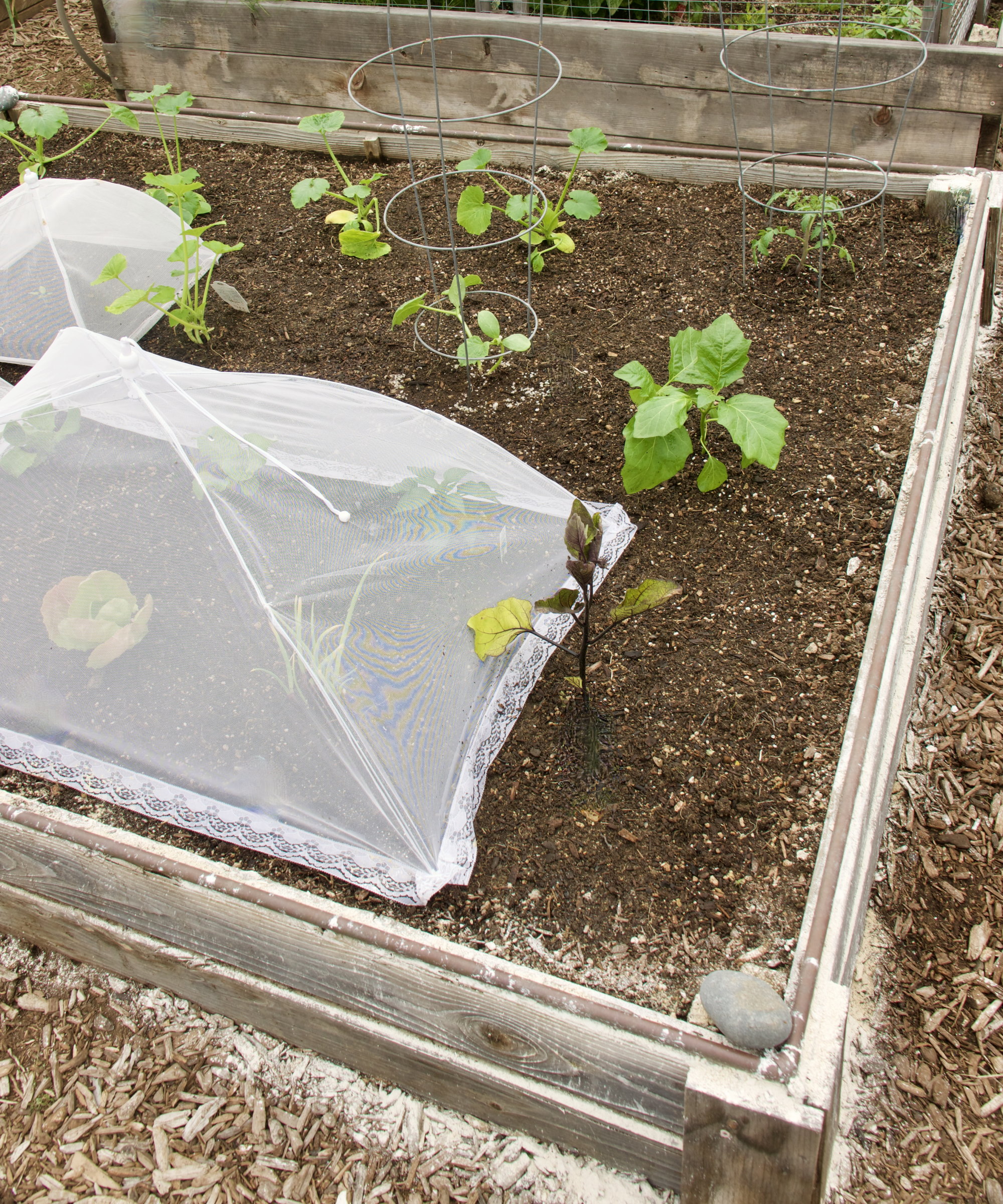
A DIY cloche dome can be easily built to protect plants. Such a dome may be made of wire or plastic and can quickly be placed over individual plants, or groups of plants.
Alternatively, an old tomato cage can be repurposed into a cloche to put over plants. This dome can be covered with frost cloth, burlap, or old bedsheets to protect plants from cold winter weather.
‘This configuration promotes air circulation while providing frost protection,’ claims Andrew Porwol. ‘To prevent frost damage, ensure that the substance does not come into contact with the plant.’
If you grow plants in rows in a vegetable garden, arrange hoops along the row and cover them with frost cloth. This is a successful method of protecting rows of vegetables from frost and also warming the soil in spring to allow for earlier sowing of seeds.
Again, these hoops can be made of any old wire or plastic you have, the only consideration is that they need to be sturdy to stay upright and not bend. I have previously made hoops for vegetable gardens out of MDPE (medium-density polyethylene) water pipes.
Any material used to cover the dome has to be securely anchored to the ground to prevent it from blowing away in strong winds. Heavy-duty landscape staples, available at Amazon, are a great option to firmly secure the material in place.
4. Plastic sheets

Any old plastic sheets can be used on their own to cover plants from frost. Plastic is a tough and cheap material that can protect plants from the worst of the winter weather and, provided it is clear, allows light to reach plants - similar to growing in a polytunnel. It is thought that plastic can keep plants ten degrees warmer than the outside air temperature.
Plastic sheets can be laid over full rows of plants, ideally laid over hoops as mentioned above rather than sitting directly on the plants. Alternatively, a DIY structure can be built to cover individual plants with plastic.
‘It is best to use three stakes around the plant and lean them to the center like a teepee before draping the plastic over the plant,’ says Scott Seargeant, an experienced landscaper and arborist.
‘Use bungee cords to keep plastic from coming undone. Be sure to remove the plastic during days when the temperature exceeds freezing or risk plants getting too hot.’
5. Fleece
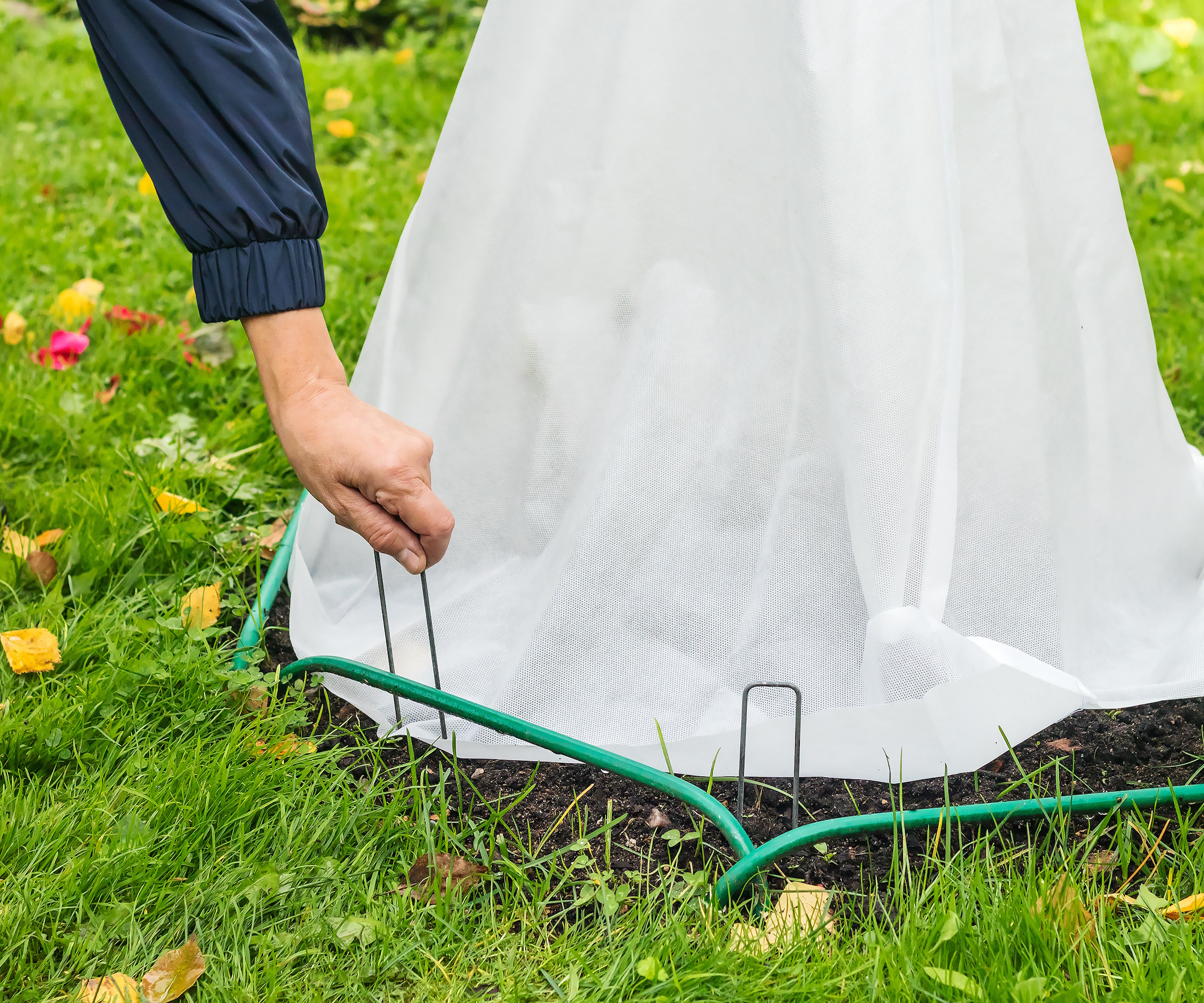
One of the best alternatives to cloches, and a proven way to protect plants from frosts, is to cover them with fleece. Fleece is commonly available and comes in different grades offering varying levels of protection from cold. It can keep plants up to five degrees warmer than the outside temperature.
Fleece is a budget-friendly alternative to cloches. Row covers, sometimes labelled as horticultural fleece, tend to be sold in large sections. They can be cut into smaller sizes if required, or you can get ready-made fleece products for wrapping trees, shrubs, or individual plants. Fleece is washable and reusable, so it can be used year after year.
Scott Seargeant recommends a unique, and somewhat festive, way to supplement your covers with mini lights - offering further protection against the cold plus bringing a little beauty to your backyard ideas in winter.
‘One of the best ways to protect plants from frost is to wrap them with Christmas lights. In areas where temperatures get considerably lower the 32 degrees F. I suggest wrapping the ground area above the roots and covering the plant with a frost blanket.
‘The lights will produce a decent amount of heat and keep plants above freezing and you can incorporate them into your Christmas decorations. The number of mini light strings depends on the frost sensitivity of the plant and how cold your area can get.’
Warm and breathable frost blankets made of lightweight fabric material to protect plants from exposure to storm, hail, snow, rain.
A set of two plant protection tents and two packs of fiberglass frames to cover plants and protect them from the winter elements.
A pack of 10x30 ft winter plant protection covers made from polypropylene fabric to protect against frost.
Even with all the best planning, there may be times you need to protect plants from cold weather in a rush. If you do not have time to construct any DIY cloche alternatives, or there is no fleece or plastic to use, there are still options. These can be as simple as placing lightweight blankets or old bed sheets over plants, or covering plants with upturned buckets. Just ensure that any covers are anchored tightly in place to prevent the wind from dislodging them and exposing plants to the elements.







